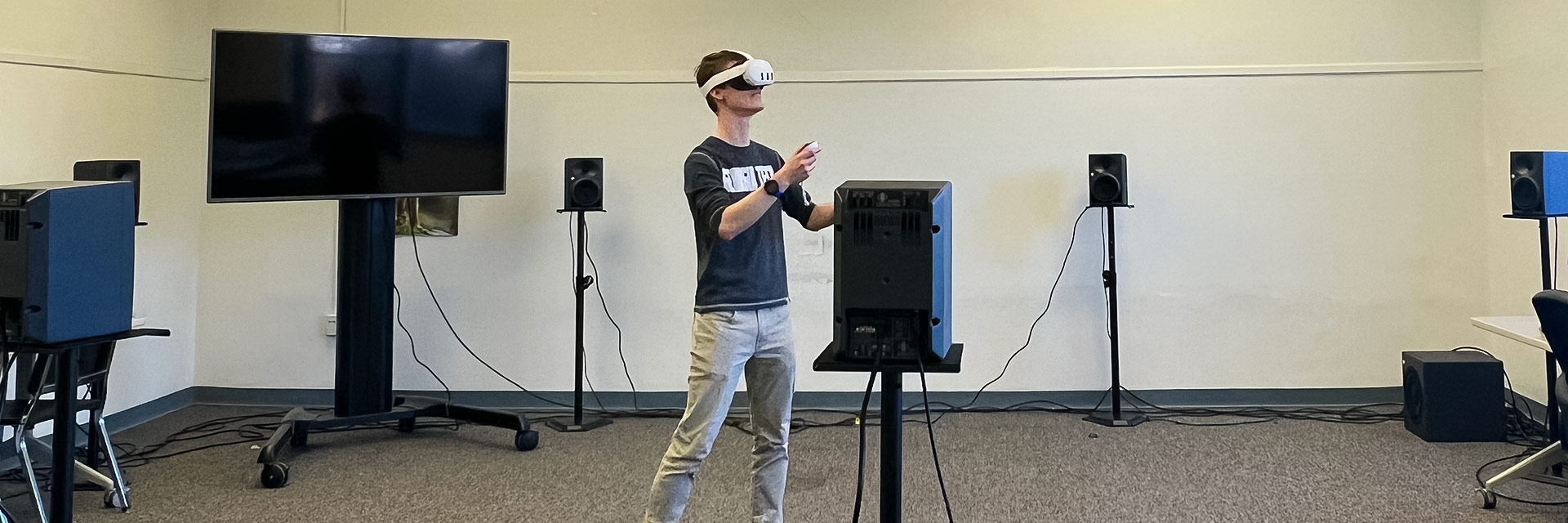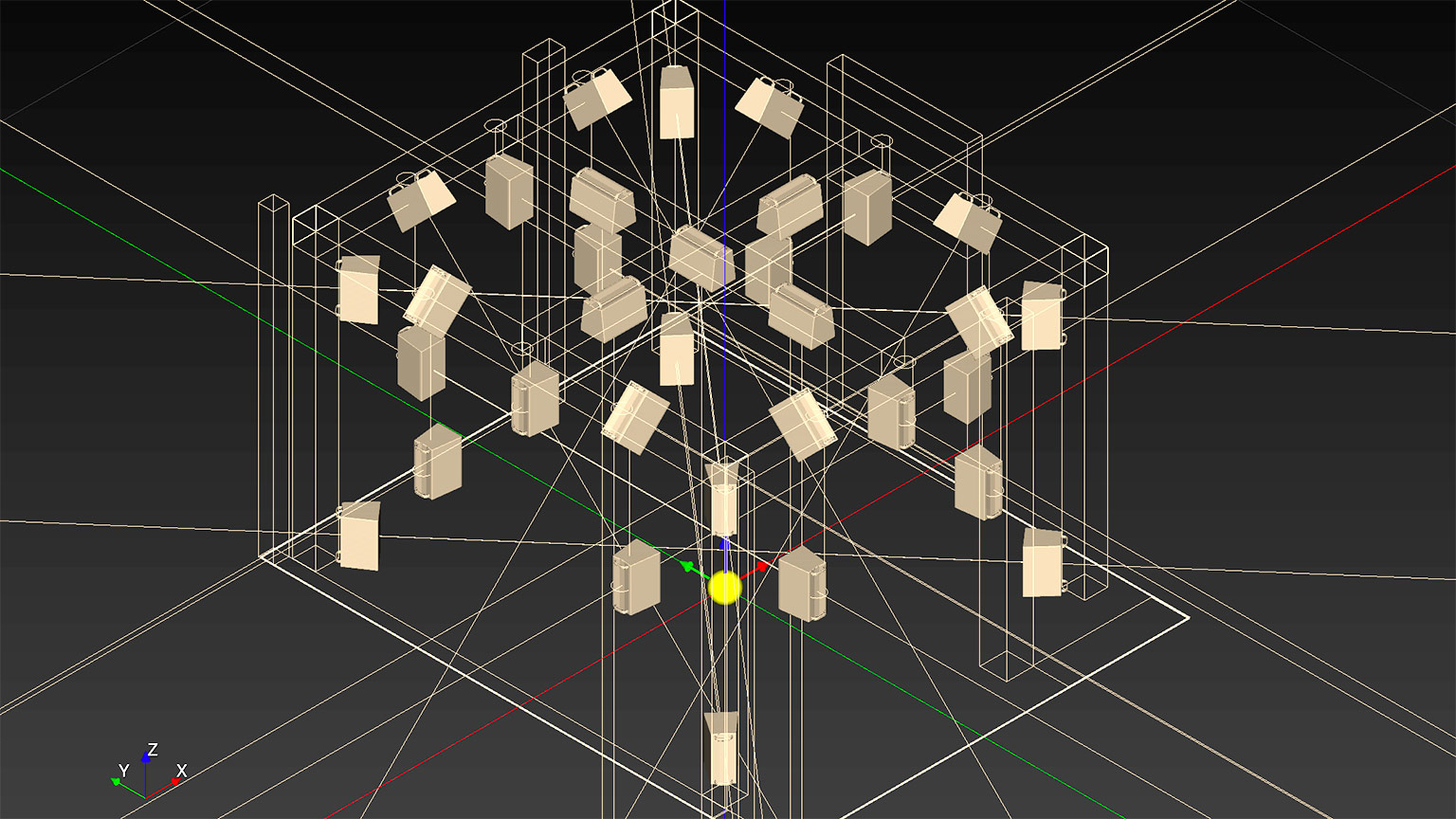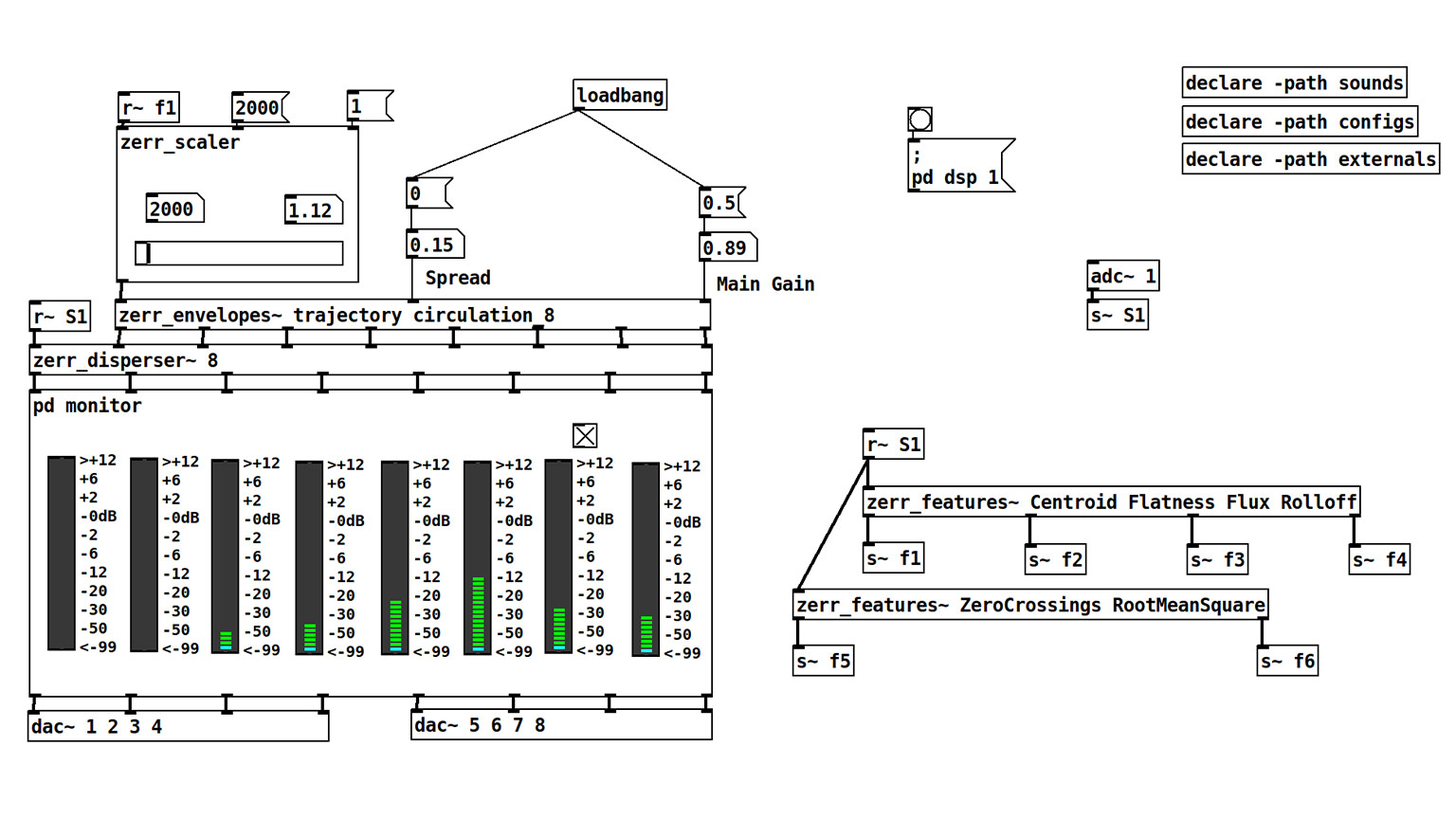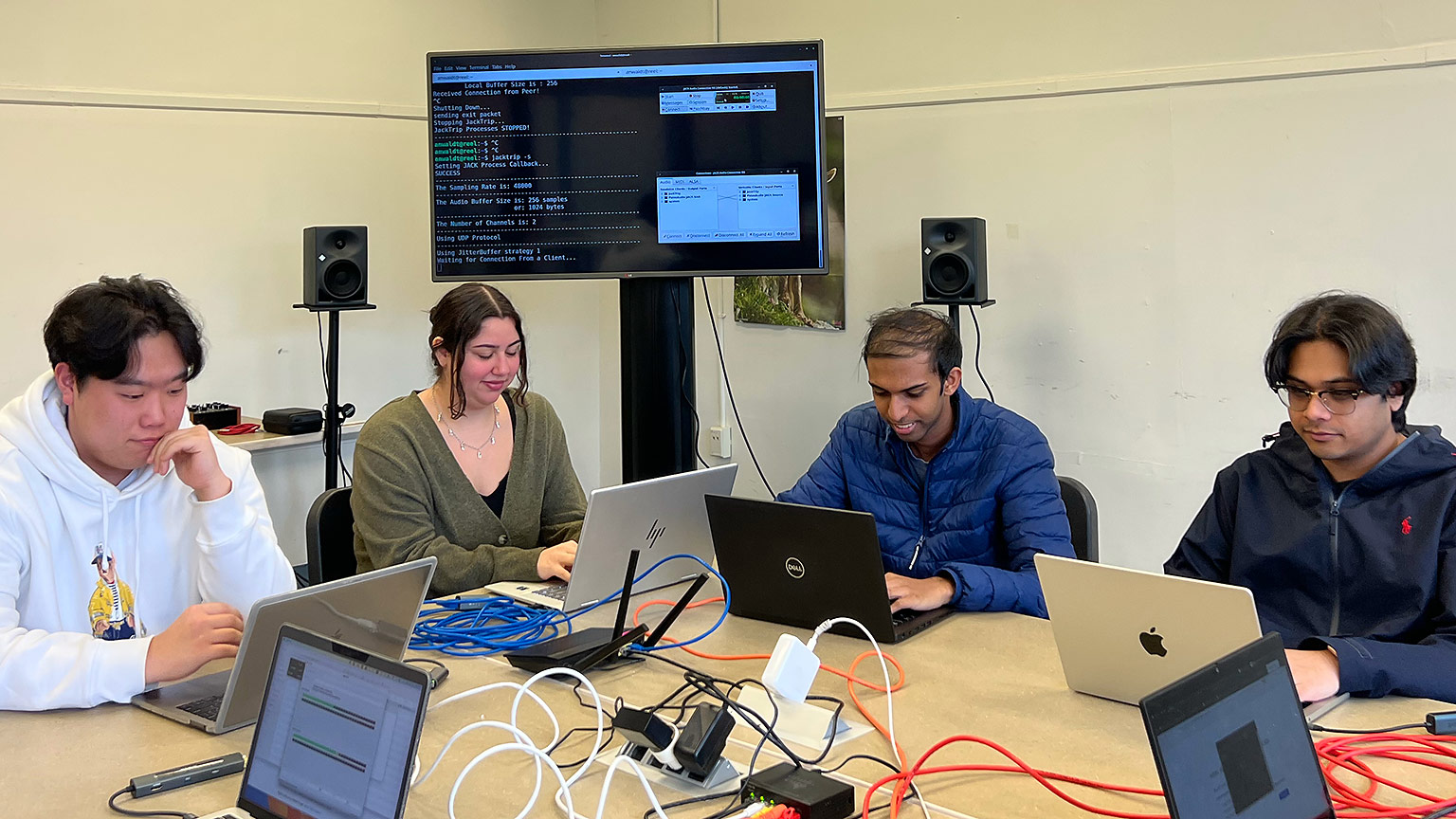
Lab for Interaction and Immersion (L42i)
Lab for Interaction and Immersion (L42i)
The Lab for Interaction and Immersion (L42i) explores technologies and artistic concepts for human-machine and human-human interaction in music and sound art, with a focus on spatial audio and immersive experiences. In a holistic approach, we combine expressive interfaces, network technologies, and algorithms for sound synthesis and processing to create a deep link between technological systems, composition, and performance.

Project: Immersive Sound Systems
The Immersive Sound Systems project focuses on accessible and sustainable hardware and software solutions for large-scale multichannel sound systems. Linux-based distributed rendering clusters allow the combination of different technologies, such as Wave Field Synthesis and Ambisonics. The key goals of this project are open-source solutions, which make these complex systems easy to use and maintain in different locations and application scenarios.
In the scope of this project, we will launch a new space for spatial audio research and music production at Georgia Tech. The system will be open to researchers and students, allowing traditional use with Digital Audio Workstations, as well as individual software solutions.

Project: Interactive Generative Environments
The combination of immersive audio technologies with generative approaches and sound synthesis algorithms opens various directions of research and artistic projects. The Interactive/Immersive Generative Environments project considers applications in interactive installations, health and well-being, as well as experimental performance.
AR/VR interfaces, computer vision, and expressive input devices allow a deep interaction with the immersive generative environments.

Project: Network Systems for Music Interaction
Network systems can be used to transmit audio signals in local or remote scenarios. This allows rehearsals and performances across long distances with large numbers of participants. Beyond this, however, network technologies can be an integral part of music composition and performance.
Network Systems for Music Interaction explores the artistic potential of network technologies in on-site and distributed configurations. For this, we rely on JackTrip and a dedicated cluster of microcomputers.
The 2023-24 Team
Graduate Students
Xinni Li
Evan Murray
Hyunkyung Shin
Undergraduate Students
Maria Belgodere Pagan
Donald Buck
Mahir Haque
Junseo Heo
Sahil Parekh
Questions?
Contact Us